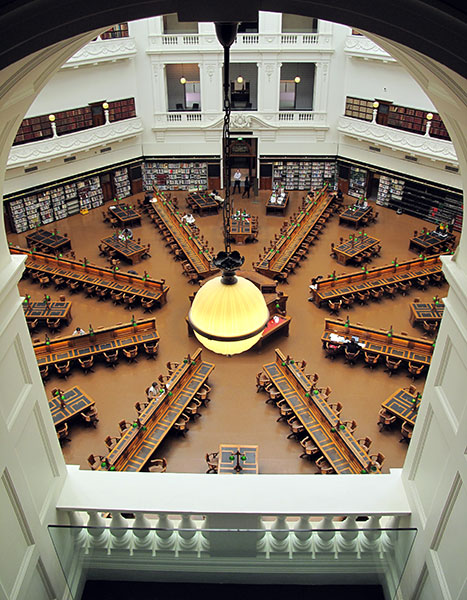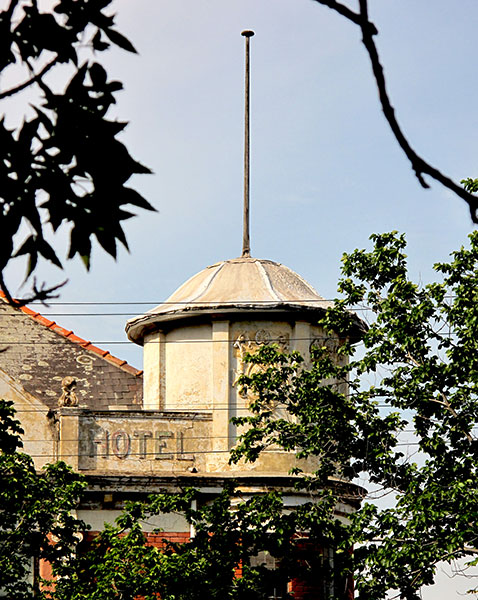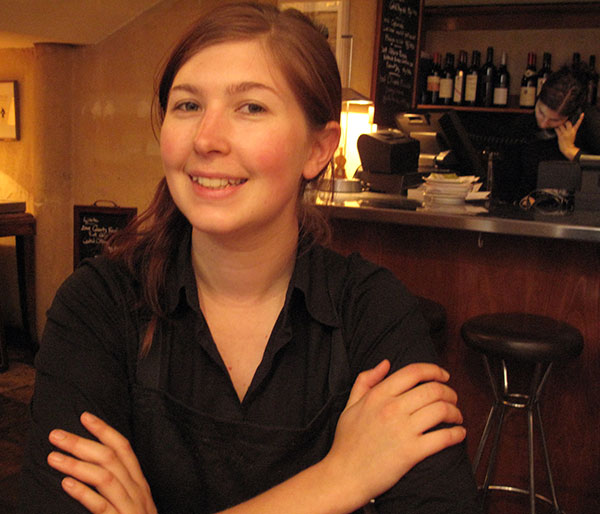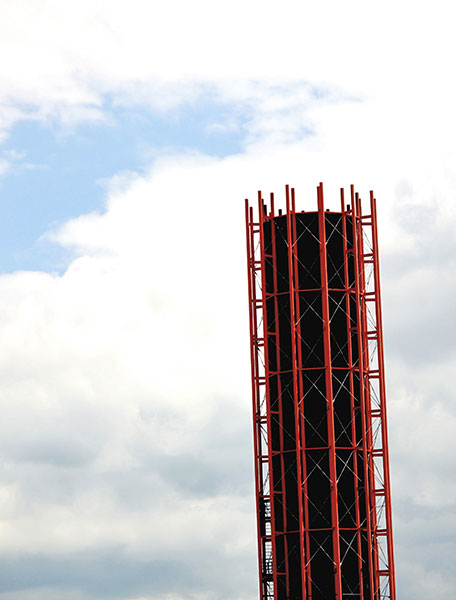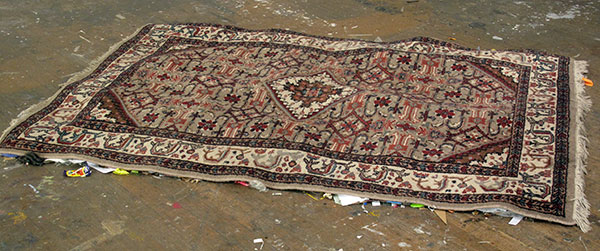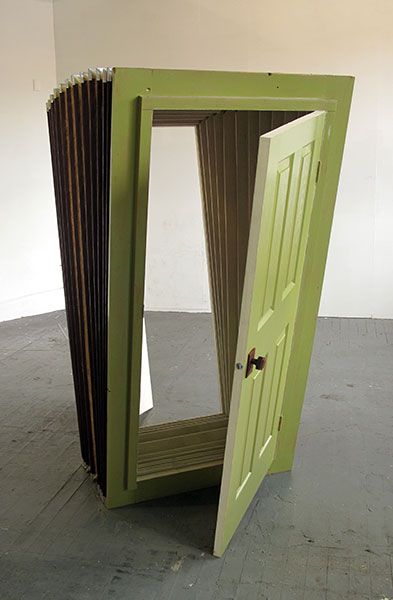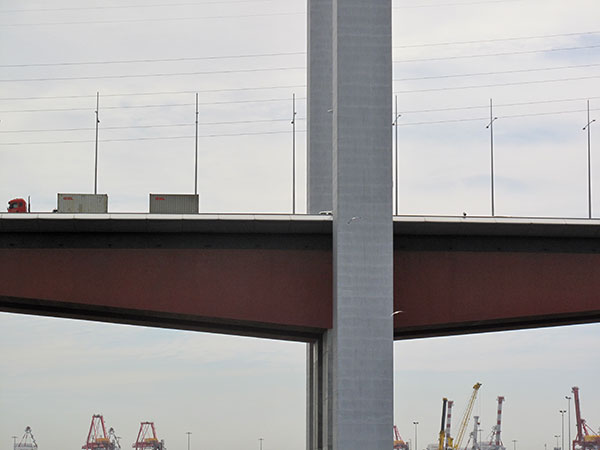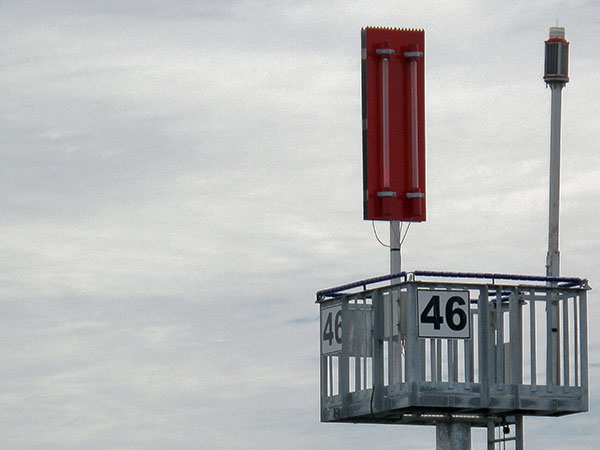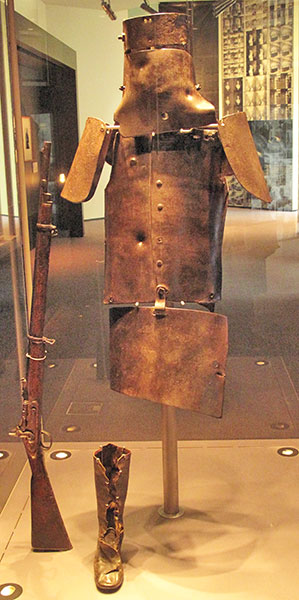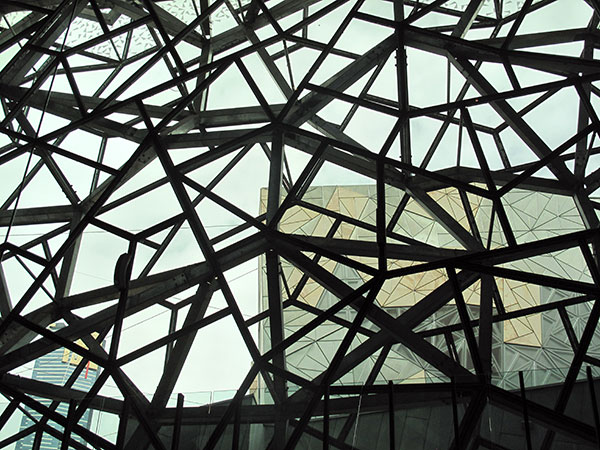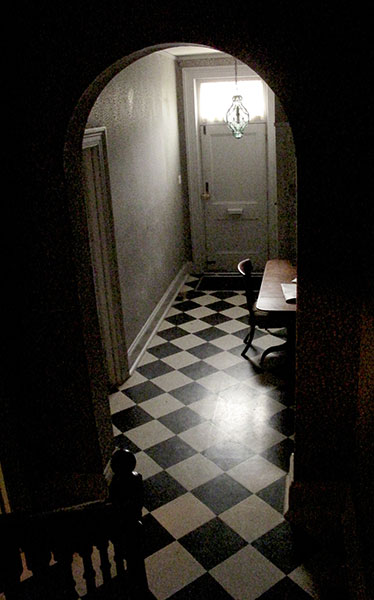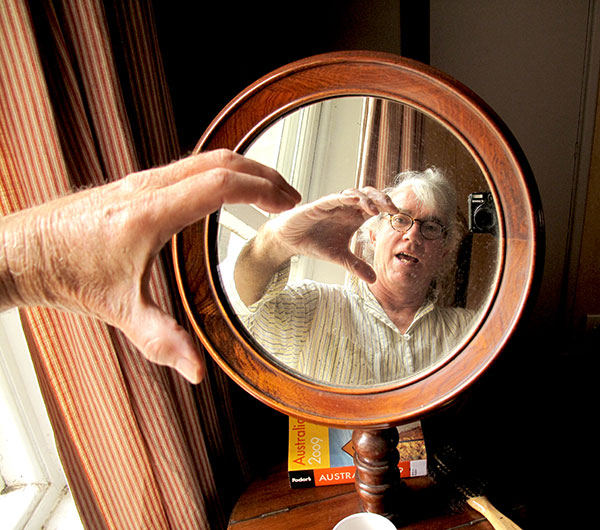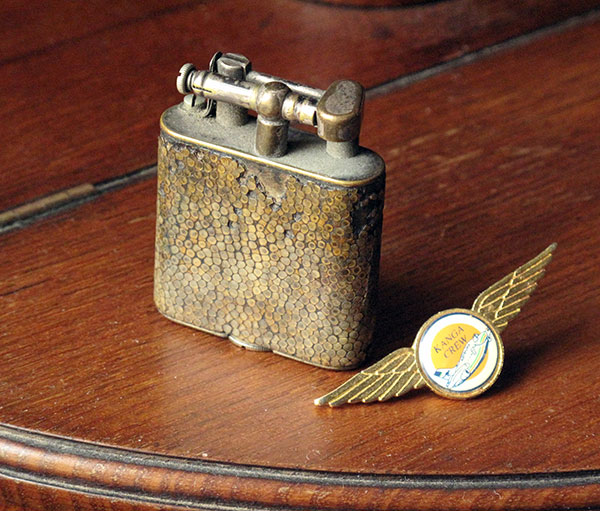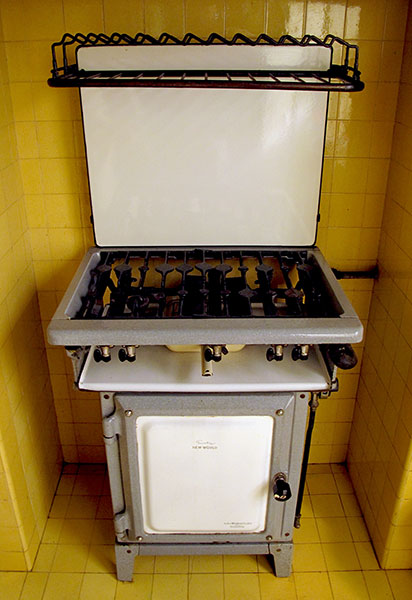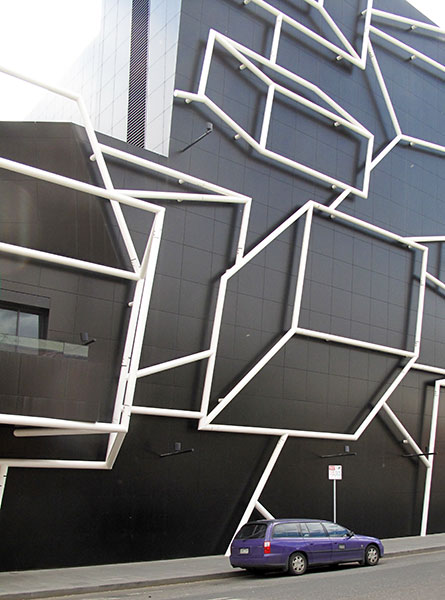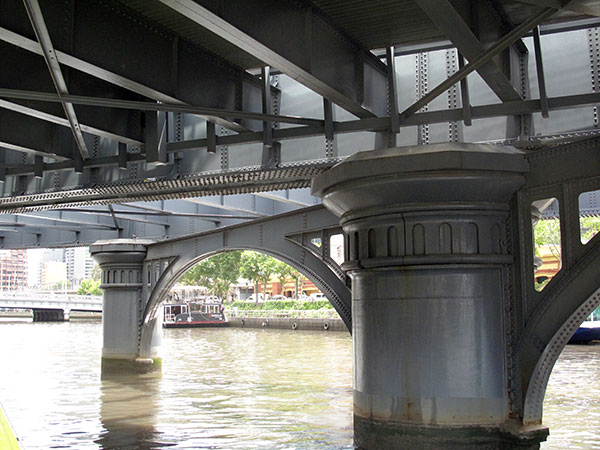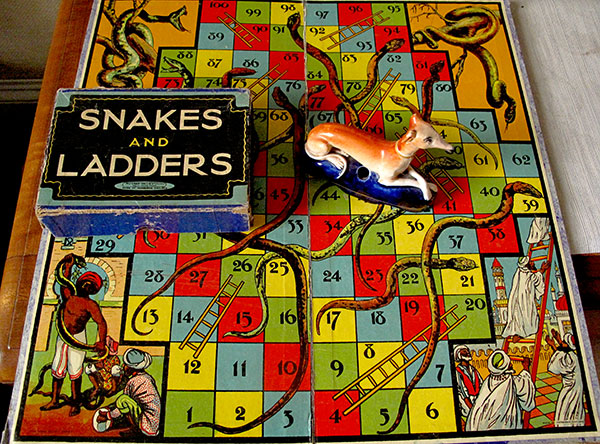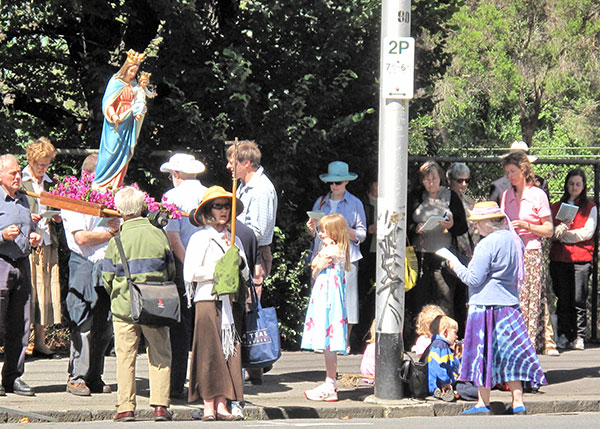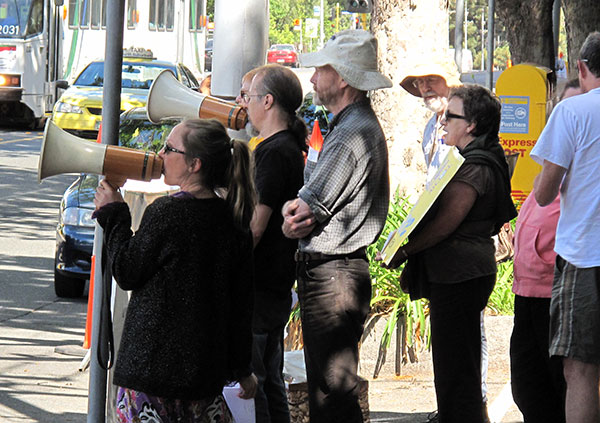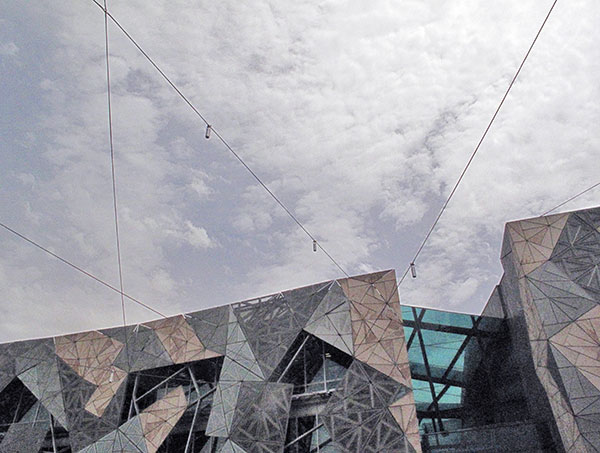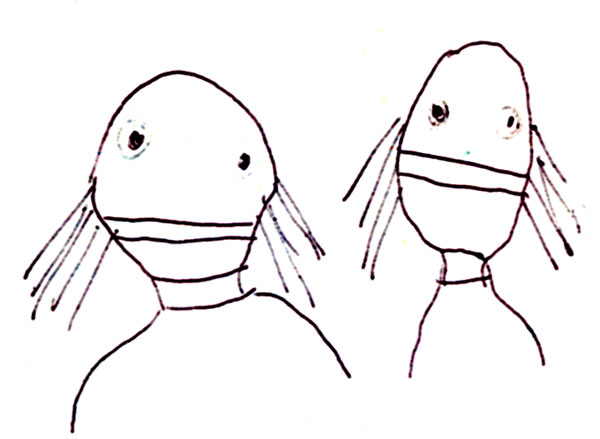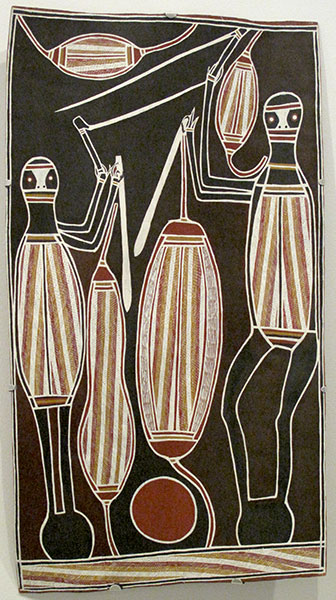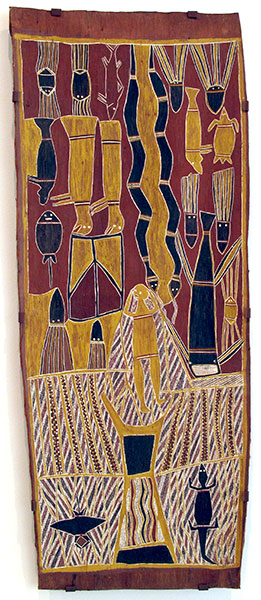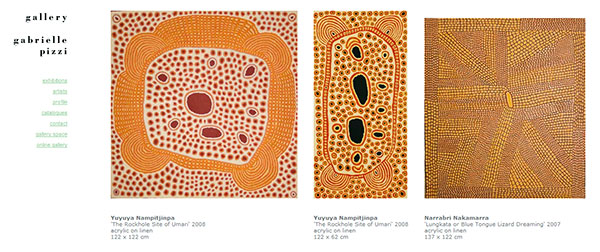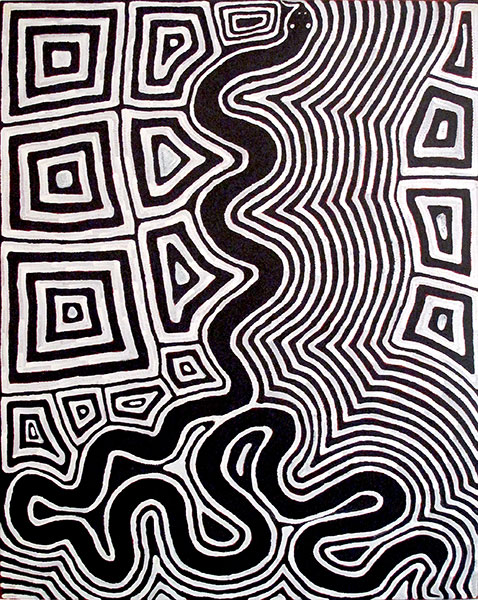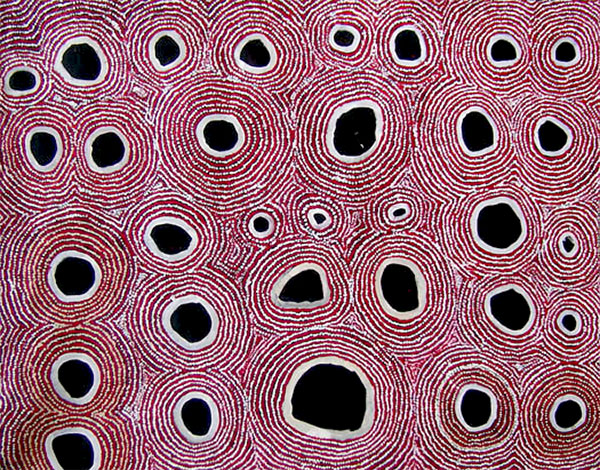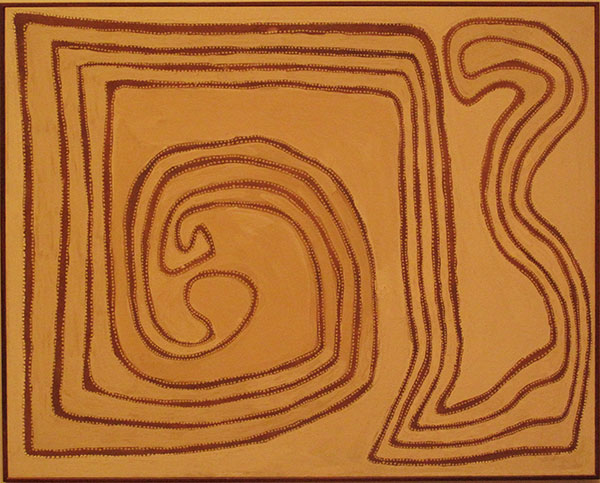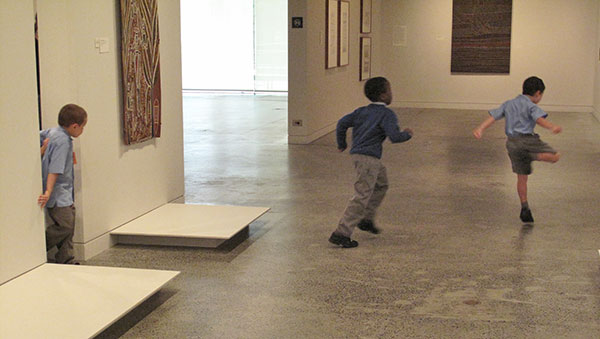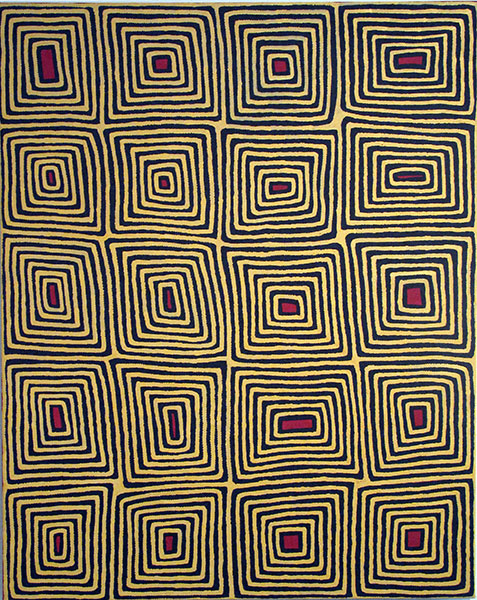The people in Melbourne kept trying to express the difference between Melbourne and Sydney. Maybe it’s like the difference between Philadelphia and New York or between San Jose and San Francisco. Not that either of these comparisions really does justice to the urban charm of Melbourne. Each city is unique.
It’s nice that Melbourne is on a slanting slope, and that it has so many old buildings—in that sense it’s a bit like Seattle, only minus the all-important factor of the ocean. In any case, I’d say that Sydney feels a little more sophisticated and happening than Melbourne—and, like San Francisco or Seattle, Sydney is on the ocean instead of on a muddy river or bay.
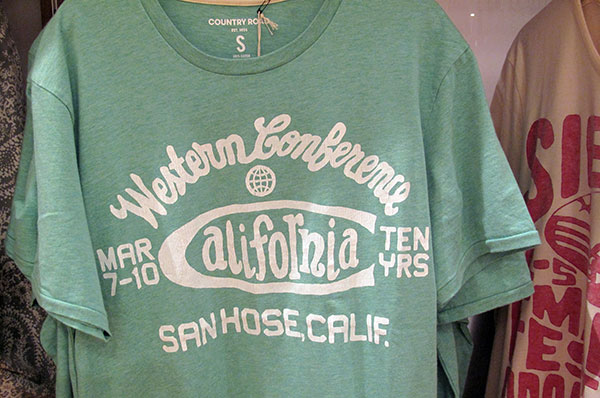
Speaking of my fair home city of San Jose, in a Sydney department store I saw a Chinese-made T-shirt saying, meaninglessly, “Western Conference. California. Ten Years. San Hose, Calif.” With an “H” instead of with a “J.” San Ho, yes.
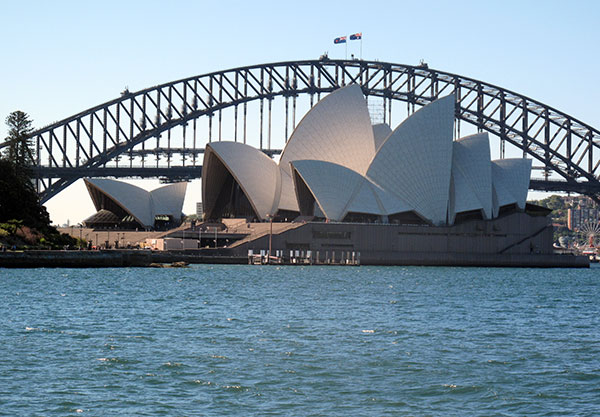
We stayed in the Russell Hotel, a relatively inexpensive B&B in the Rocks district of Sydney, near a bunch of ferry slips along what’s called the Circular Quay, with the famous Sydney Opera House just a short walk along the waterfront from our room.
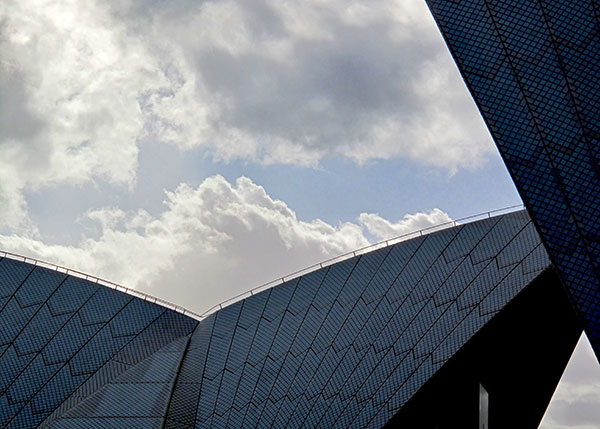
The Opera House is one of those rare buildings that lives up to one’s expectations. I never quite understood how it was shaped until I got to be here and walk around it. It’s roof is made of a bunch of cusps or horns or pairs of sphere-sectors. They look a little like sails or claws. Although cast from cement, the roofs are covered with white and beige tiles, so they’re pleasant to the touch—you can walk all around the outside of the building, and in many spots the roofs come down to the ground.
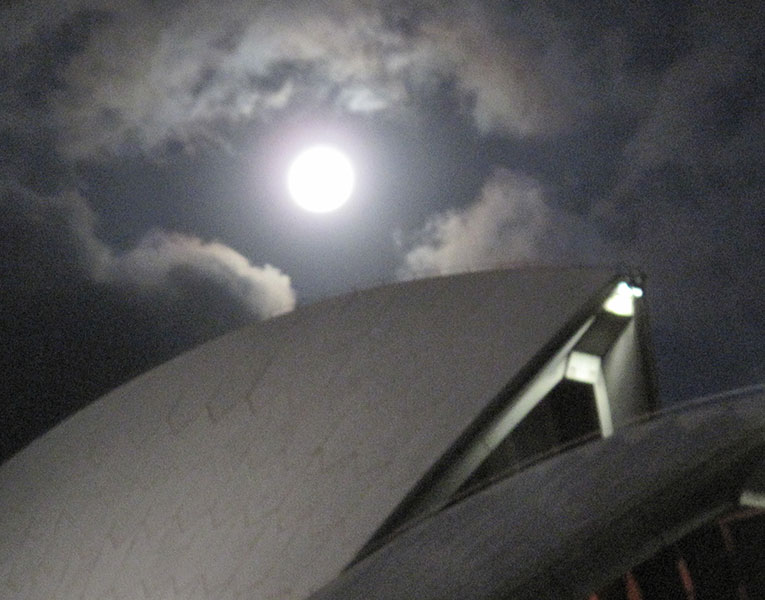
We had dinner—roast jewfish(!)—in a restaurant near the Opera House with a full moon rising over those Mohawk white roofs, the Sydney Bridge all lit up, tall buildings reflected in the water, and the lights of the Luna Park amusement park in the distance, it’s entrance a huge face with an open mouth. You can take a ferry to Luna Park!
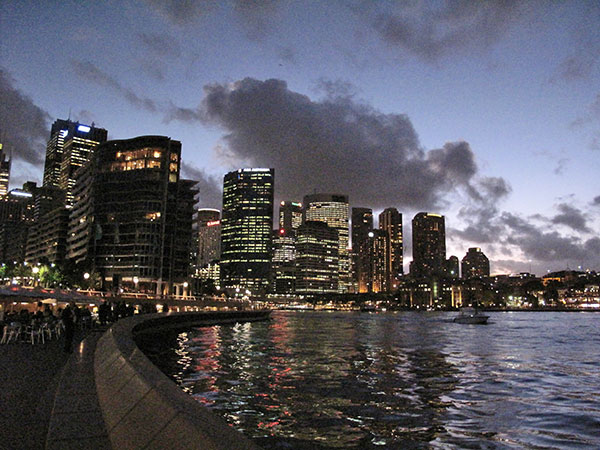
[Great view of Sydney from the quay near the Opera House.]
I’d like to see a show at the Opera House—but the big halls are sold out, and the shows in the small halls aren’t so inviting, like, a one-man show of a British guy lamenting about losing his apartment of twenty years (seriously), and a show of drag queens singing Christmas carols. Not that there’s anything wrong with that…but instead we went to see Les Claypool at the Enmore Theatre, also getting to mingle with hipster Sydneysiders (they really call the natives that).

[Squirting turtle in the lovely Archibald Fountain in Hyde Park. (Thanks for the ID, Paula)]
The Enmore is an old movie theater in the Valencia-Street-like neighborhood of Newtown. A quartet: an eclectic cello, a drummer, a vibes player, and Les on various kinds of bass guitars or bass-guitar-like instruments. The musicians wore tuxedos and masks.
Les rocked, at one point the vibes player switched to drums and did a dual drum solo with the main drummer, incredible, like a conversation, and near the end, Les came back onstage, dressed up in an ape suit and playing a one-string instrument by whacking it. The lights were beautiful colored cones, filled with stage fog.
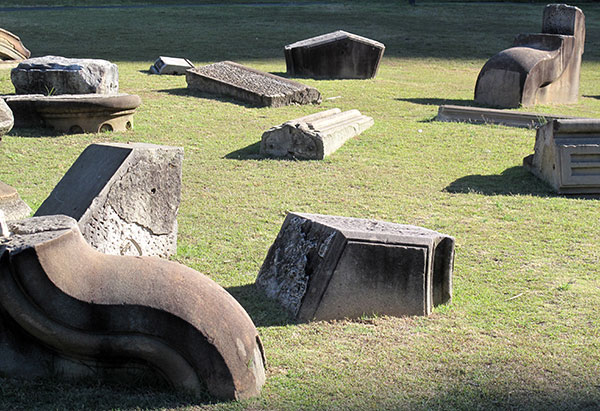
[Random scraps of ornamental stone from an old building, arranged at the edge of the botanical gardgen in Sydney.]
It was good to see the grungers at the concert and in the neighborhood. We overheard a woman on six-inch platform boots telling a friend, “I’m angry at everyone all the time.” I saw a guy in a T-shirt saying “Dag Nasty” with a picture of a sheep’s butt (remember that a “dag” is a sheep’s dingleberry).
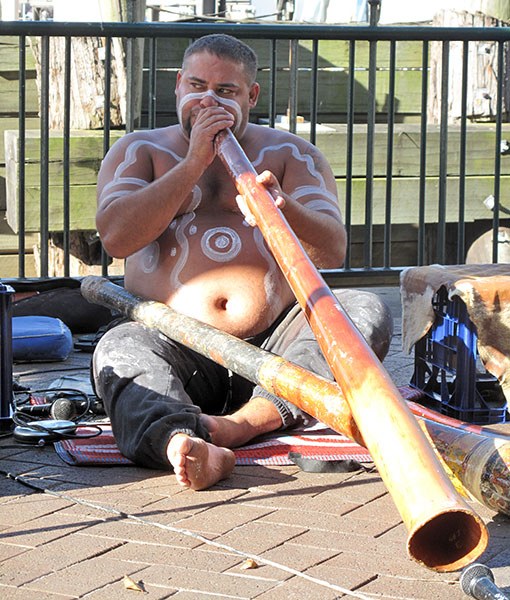
[Lots of didgireedoo players on the Circular Quay, a great sound all day.]
In the train back from Newtown we sat near a weathered Aussie couple, drinking a half-pint of gin, the woman maundering on and on, the two of them somewhat fitter-looking than their US counterparts. Looking out the train window I saw an excavating machine at work beneath an underpass, one of those jointed arms with claws, and had the sudden feeling of being on another planet.
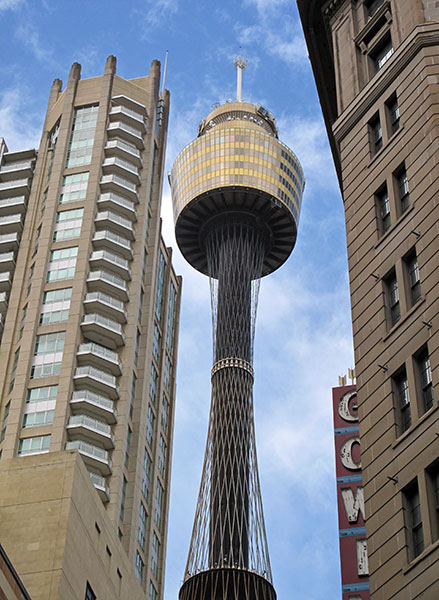
[The Sydney Tower.]
The next day I happened to start talking to another American in downtown Sydney, a guy called Mike, with tattoos on both arms. He said he came from New Orleans, and that he was in Australia as a musician, with some gigs, moving from town to town. “You’re playing with Les?” I said, as a long-shot.
And, yes, he turned out to be the vibes player for Les Claypool’s band. He was a little surprised that I’d seen him playing the night before, but maybe not as surprised as I was. For me, it felt like meeting a mythic shaman or a cartoon character. He seemed glad to talk to me. They’re playing the Fillmore in San Francisco on New Years Eve, as they’ve often done before.
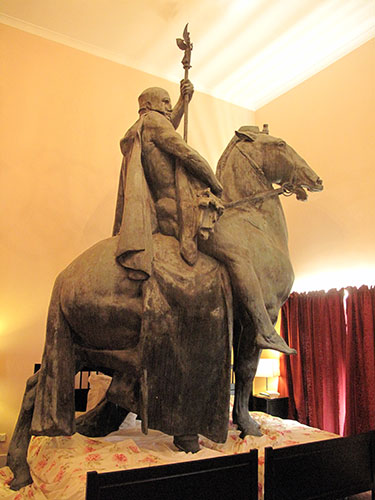
[An artist who’s currently calling himself Tatuz Nishi made a site-specific work by building little houses around two large sculptures of men on horses in front of the Gallery of New South Wales.]
I’m feeling some literary inspiration for my writing from the input here. The platypus beak, the fake-autobiographical novel True History of Ned Kelly, the Les Claypool band concert, and the Aboriginal art.
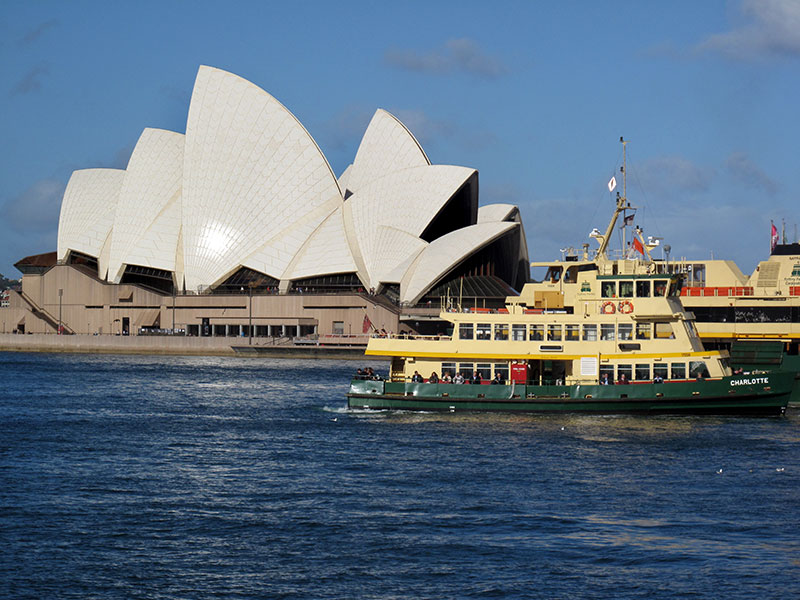
[Okay, I took a LOT of pictures of the opera. The ferries are cool, we rode them a lot.]









